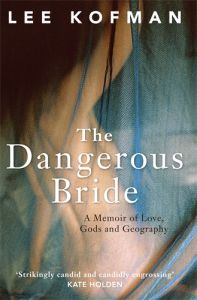lip lit: the dangerous bride
‘Polyamory is a claim that the heart is capable of loving more than one person deeply and intimately at the same time,’ wrote Anne Hunter in Archer Magazine. ‘Poly relationships are often sexual but may not be, and they may shift in and out of being romantic and sexual.’ In her article, she discusses the freedom that can be found in navigating the plasticity of interpersonal dynamics.
In the past few years, newspaper columnists have decried the death of monogamy. The Dear Sugar team, Cheryl Strayed and Steve Almond dedicated a whole podcast episode to polyamory, which is the cheeky subject thrown around at dinner parties, giggles hidden behind hands (would you ever…?) To some extent, this has bolstered the social acceptance of unconventional relationships. Is polyamory now seen as an alternative to the nuclear family model?
Despite this progression, polyamory still remains a fairly misunderstood concept. Those who have grown up in a culture that expects monogamy could question why someone would crave multiple romantic relationships. Wouldn’t the love and sense of connection lessen between more than two people? How is an arrangement like that emotionally possible, and shouldn’t romantic love between people be exclusive?
Lee Kofman’s memoir, The Dangerous Bride, explores polyamory from her own personal experience. An Israeli-Australian author, Kofman has been awarded several prizes for her work, and has been mentoring writers and running writing courses for ten years.
Bored of daily life in Tel Aviv, and craving adventure, Kofman pursues study in the wilderness of Australia, taking a writing residency project in Perth. About this time her marriage is on the rocks – with Noah, a businessman brought up on the ‘fringes of Jewishness’. Kofman struggles with the ongoing desire to break into personal debauchery, giving rise to conflict, and begins to investigate the ‘dream of love, entailing commitment but also sexual freedom.’
There is a constant battle between the stability of her relationship with the comfort of husband Noah, and her encounters with ‘J’, perhaps the only other main character in the book – whose presence isn’t ever fully realised or even revealed, and remains for readers a bit of a mystery. But from what we do read of J, he is like a dark haze hanging over Kofman and her life, as bizarre, unsettled and ambiguous as the book itself.
The narrative within Kofman’s memoir is, unusually, in a constant state of flow – events occur out of chronological order; experiences weave in and out of the next. This abstraction of plot, and lack of structure renders The Dangerous Bride bafflingly surreal, bizarre and disjointed.
The literature is rich with intellectual inquiry. Spirituality, familial heritage, personal identity, aspects of culture and history are just a few of the many themes within this arduous creation. An enchanting mind, Kofman is also preoccupied with the often-missed, simplistic aspects of people, like deep voices she connects to radio broadcasting, thin lips, and sharp features:
‘…small, skinny and blonde, she wore glasses and flat shoes, fitting uncannily well with my initial fantasy of her. Bianca’s sharp little face had been dried up by the sun and she looked her age – mid-forties. Yet, the thin-lipped smile she offered me, serpentine in shape and impression, belied her tame appearance. I liked her for this incongruity.’
Throughout, the narrative prose diverts to a history lesson: on the surrealist painter Salvador Dali, his bizarre habits and the relationship between him and his wife and muse, Gala, or the polyamorous love triangle between Anais Nin, Henry Miller and June. These stories within chapters remind me of laboratory reports – Kofman is observing the polygamous mating habits in humans. The author could have even included the animal kingdom in her research: an exploration of polygamy in hippos or the multiple loving relationships present within species of red squirrels.
Some in-depth explanations of the reality of monogamy versus polyamory in sex and intimacy, with less schoolyard insecurities and bad decisions, would not have gone amiss – though these errors, if they could be called that, don’t detract from The Dangerous Bride‘s impact. Ultimately brave and questioning, Kofman’s memoir is a unique study on love, marriage and interpersonal diversity, challenging the traditional boundaries of relationships.


